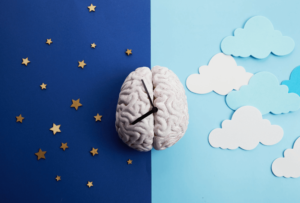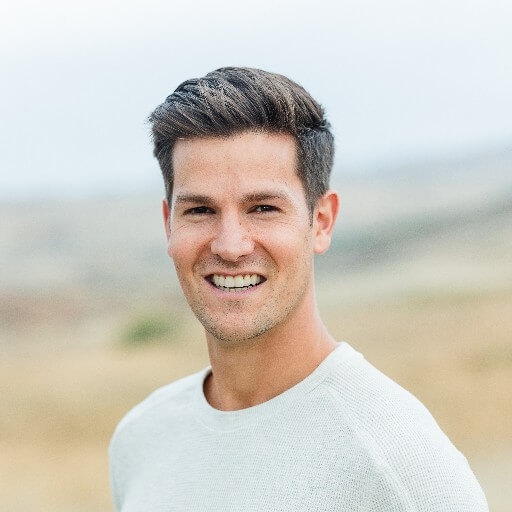
Here’s a story that might just flip the switch for you.
A firefighter named Randy — featured in The Circadian Code by Dr. Satchin Panda — had a job that wrecked his sleep. Night shifts, 24-hour calls, constant stress. He was gaining weight, couldn’t shake fatigue, and his blood sugar was off the charts. The worst part? He thought he was doing everything right. No junk food, no lazy days. Just a body that wasn’t keeping up anymore.
Maybe you know that feeling.
Randy’s life turned around when he made one change:
He started honoring his body’s natural clock.
He stopped eating late at night, got sunlight in the morning, and timed his meals inside a 10-hour window — even on night shifts.
In just a few weeks?
- His blood sugar normalized.
- He dropped stubborn weight.
- His energy came back — not just “get through the day” energy, but “let’s play catch with my kid after work” energy.
No fancy supplements. No intense workouts.
Just living in rhythm with his biology.
If that story sparked something in you, I highly recommend grabbing a copy of Dr. Panda’s book — The Circadian Code. It’s one of those books you’ll want to highlight, dog-ear, and hand to a friend.
So Why Does This Matter for You?
If you’re an athlete, a weekend warrior, or just someone who wants their energy and body back, you need to hear this:
Your body isn’t broken.
It’s just out of sync.
We’re living in a world that constantly pulls us out of rhythm:
- Eating late because we’re too busy all day
- Skipping breakfast or grabbing something random
- Missing sunlight
- Staying up just to “get one more thing done”
These little habits — over time — confuse your internal clock.
Your metabolism slows.
Your inflammation rises.
Your pain doesn’t go away.
And your willpower? It starts waving the white flag.
Pain, Fatigue & Stubborn Belly Fat: What If It’s Not About Trying Harder?
Listen, I work with runners and athletes all the time. And I hear it over and over again:
“But I already eat clean. I work out every day. Why do I still feel like this?”
Because it’s not just what you do — it’s when you do it.
Let’s take metabolism as an example.
Your digestive enzymes, gut bacteria, insulin sensitivity, and fat-burning capacity are all time-sensitive. They follow the sun. If you eat late at night, your body is less efficient at using that fuel — so it stores it instead (hello, belly fat and bloating).
Your pain sensitivity also increases at night. That’s not you being dramatic — that’s biology.
💡 Curious how light plays into this equation too? I wrote a blog on how natural light affects everything from mood to metabolism — check it out here if you’re ready to go deeper.
The Circadian Reset That Actually Works
I’ve seen it in my practice — and now we’ve got stacks of research backing it up.
Here’s how Randy, the firefighter, did it.
And how you can start — without flipping your whole life upside down.
1. Get Light in the Morning
Your brain needs a “go” signal. Sunlight first thing boosts natural cortisol (the good kind), wakes up your metabolism, and anchors your clock.
💡 Try this: Within 30 minutes of waking, step outside for 5–10 minutes. Even if it’s cloudy. No sunglasses. Let your body know it’s showtime.
2. Eat Within a Consistent 8–10 Hour Window
This is what Dr. Panda calls Time-Restricted Eating (TRE). It doesn’t require cutting calories. Just closing the kitchen earlier and keeping meals during daylight hours.
💡 Try this: Start your first meal by 8 or 9 AM, and wrap up dinner by 6 PM. That gives your body time to digest, repair, and burn fat overnight.
3. Shut Down the Screens Before Bed
Blue light tricks your brain into thinking it’s still daytime. That delays melatonin, throws off sleep, and leads to next-day inflammation.
💡 Try this: Dim the lights, turn off screens at least an hour before bed, and try reading, stretching, or journaling instead.
Want to Reset Your Body Clock and Your Metabolism in 14 Days?
I created the 14-Day Fat to Fit Reset Program because people kept asking:
“Can I actually fix this without meds, another restrictive diet, or punishing workouts?”
Yes.
Because when you reset your circadian rhythm, your body naturally starts:
✅ Burning fat instead of storing it
✅ Healing instead of hurting
✅ Giving you the energy you used to feel — without needing three cups of coffee to function
This isn’t just about weight loss. It’s about turning your body back on.
You’ll get:
- Circadian-friendly meal plans
- Gentle detox strategies
- A daily rhythm blueprint
- Accountability and encouragement from yours truly
Bonus: Want to Dive Deeper With Me and Other Health Nerds?
We just started a Book Club for patients and health fanatics who want to go deeper into natural healing, biohacking, and performance.
This month? We’re diving into The Circadian Code.
➡️ Join the book club here and let’s geek out together (plus get my book overviews and takeaways).
When You’re Ready…
Most people wait until the pain is unbearable…
Until the fatigue wrecks another race…
Until their doctor brings up meds.
But what if you didn’t have to wait?
What if now is the moment you choose to work with your body instead of against it?
👉 Join the 14-Day Fat to Fit Reset and give your body a reason to thank you — in just 2 weeks.
Because like Randy learned…
You don’t need a new life.
You just need a new rhythm.
How about you?…
Have you tried this before? We want to hear from you! Please leave a comment or question below OR share this with a friend it could help. We look forward to hearing from you!
Sources
- Panda, Satchin. The Circadian Code: Lose Weight, Supercharge Your Energy, and Transform Your Health from Morning to Midnight. Rodale Books, 2018.
- Chaix, A., Zarrinpar, A., Miu, P., & Panda, S. (2014). Time-Restricted Feeding Is a Preventative and Therapeutic Intervention against Diverse Nutritional Challenges. Cell Metabolism, 20(6), 991–1005.
- Wilkinson, M. J., et al. (2020). Ten-Hour Time-Restricted Eating Reduces Weight, Blood Pressure, and Atherogenic Lipids in Patients with Metabolic Syndrome. Cell Metabolism, 31(1), 92–104.e5.
- Czeisler, C. A., & Gooley, J. J. (2007). Sleep and circadian rhythms in humans. Cold Spring Harbor Symposia on Quantitative Biology, 72, 579–597.








